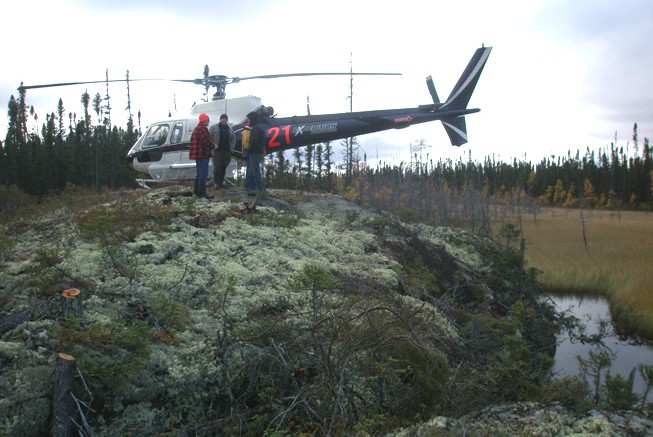One of the more significant events for Ontario mineral explorers in September took place in the halls of the province’s bureaucracy, with Cliffs Natural Resources losing its application for easement (surface access right-of-way) across mining claims held by KWG Resources in the Ring of Fire chromite camp of northern Ontario.
The precedent-setting ruling by the province’s Mining and Lands Commissioner (MLC) was a win for the “little guy,” in that it strongly affirmed the rights of existing mining-claim holders in the face of an aggressive major company with a competing development plan for the area.
If you recall, KWG Resources and Spider Resources discovered the Big Daddy chromite deposit in the McFaulds Lake area in 2008, and a year later KWG approached Cliffs about becoming a shareholder to help with Big Daddy’s development.
With Cliffs’ approval, KWG staked a series of claims through its subsidiary Canada Chrome Corp. (CCC) along a string of sand ridges leading away from Big Daddy, with the intention of securing land for a future railway that would connect the remote Big Daddy property with infrastructure to the south.
With the whole region characterized by bug-infested, swampy terrain, high ground in the camp is at a premium, and well worth fighting over.
After CCC staked the high-ground claims and carried out work there — such as drilling boreholes — Cliffs bought Freewest Resources and its Black Thor chromite deposit in the camp, and then bought out Spider Resources. Cliffs also tried to buy KWG’s stake in Big Daddy, but the two remain co-owners of Big Daddy to this day, like divorced spouses still living in the same house.
The critical easement problem flared up when Cliffs backtracked on its initial support of the rail option, and promoted the idea of building a road to Big Daddy by necessity along the same route KWG set aside for its original rail plan.
CCC would not consent to Cliffs’ use of the surface rights on its claims, as it was clear to KWG that a rail line and road could not coexist on the same, thin route. And so Cliffs brought an application to the MLC to overrule KWG’s objections to Cliffs’ surface plans.
This is the application that was dismissed last month, and the ruling affirms that under Section 51 of Ontario’s Mining Act, a mining claim holder such as KWG has prior right-of-surface use for all aspects of mineral exploration and development.
At a more practical level, if Cliffs is set on going ahead with its road option, and KWG resists the idea, Cliffs can resolve the issue by bidding for KWG in its entirety. At press time, the junior has a $48-million market capitalization, up about 30% since mid-year.
KWG’s envisaged rail line would also service the company’s nearby Black Horse chromite project, which it is optioning from Richard Nemis’ Bold Ventures. In early September, KWG released a new resource estimate for Black Horse, calculated by Sibley Basin Group Geological Consulting Services, that takes into account the reanalysis of stored pulps from drilling carried out by Fancamp Exploration and Noront Resources in 2008 on an adjacent property that Bold and then KWG optioned in early 2013.
This new figure pegs the inferred resource at Black Horse at 46.5 million tonnes grading 38.8% chromium oxideusing a 20% cut-off. However, this impressive figure has plenty of cautionary words in its accompanying notes, such as “poor confidence,” “drilling is . . . rather sparse and is inadequate to properly categorize the mineral continuity” and “higher-grade areas . . . are poorly defined.”
In another indication about just how strained the relationships have become amongst all parties involved in the Ring of Fire camp (we haven’t even brought up the First Nations issues and the blockades), Bold Ventures followed up with its own press release, strongly emphasizing that the new Black Horse resource estimate was calculated independent of Bold, which is in fact the operator of the joint venture with KWG. Bold stated that its opinion of the new resource is that “in line with its exploration philosophy . . . this study is preliminary in nature based on the limited data available at this time, and [it is] of the view that additional work should be carried out.”





Be the first to comment on "Editorial: KWG-Cliffs ruling – No appeasement on the easement"